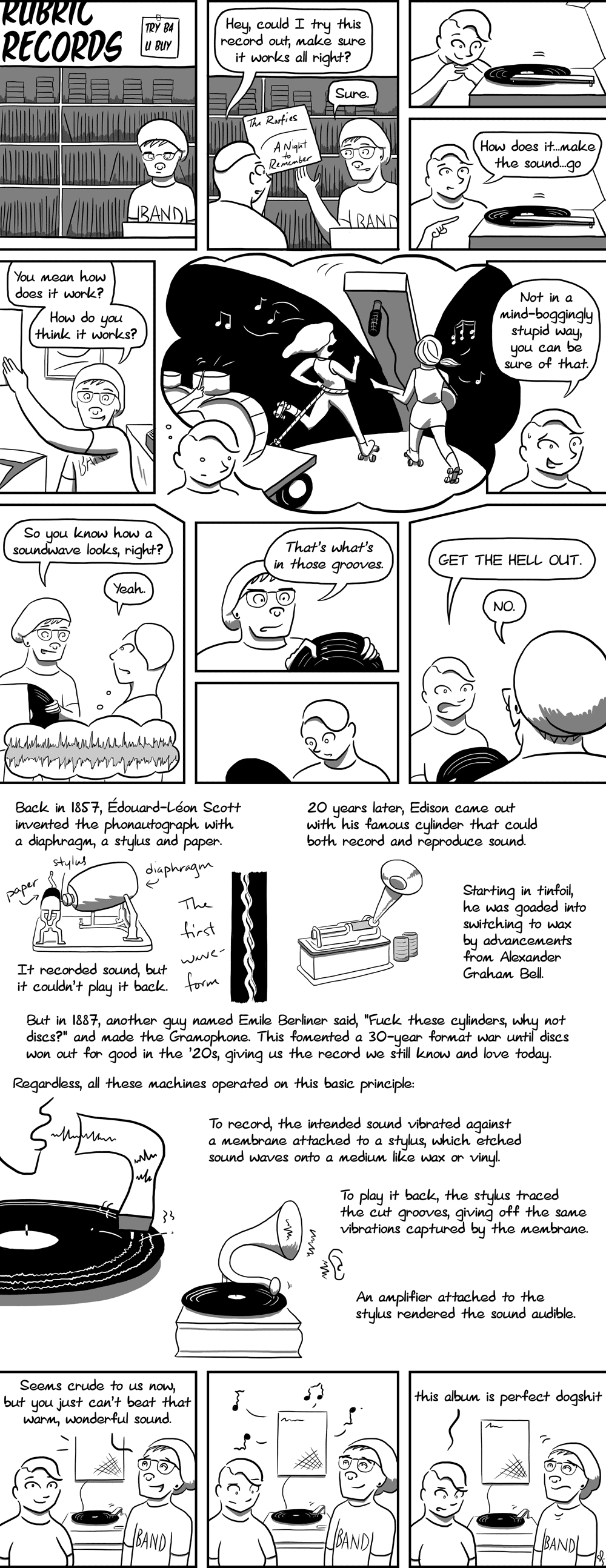And that’s how I learned my lesson. Interesting to frame a strip where I’m the one being taught, instead of the other way around. But I was so amazed when I discovered the mechanism behind the record groove, I thought it appropriate.
A few fun facts:
- – Wax cylinders used to come in cardboard tubes, which came to be known as cans. John Philip Sousa, he of the march milieu, did not take kindly to Edison’s cylinder, deriding its artificial quality. He differentiated cylinder playback from live renditions by dubbing it “canned music.”
- – Scott’s phonautograph effectively erased soot from lamp-blackened paper, leaving the physical representation of sound vibration. Although never intended for playback, in 2008 Patrick Feaster said “nuts to that” and converted Scott’s phonautograms into listenable works. You can hear them here, and boy, are they doozies.
- – Charles Cros invented an intermediary between Scott’s phonautograph and Edison’s phonograph. called the paleophone. It was intended to play back captured phonautograph melodies by tracing the pattern onto acid-resistant metal, then dumping the disc in an acid bath, leaving a groove.
- – Berliner did the same thing with his Gramophone, overlaying a zinc disc with a thin layer of beeswax. When the cutting stylus recorded, it scratched away the beeswax; the plate was then put in acid, with a groove etched where the wax had been scraped away. Berliner’s Gramophone, obsolete since 1901, also gave the Grammies their name.
For a good demonstration of how wax cylinder recording and reproduction worked, check out this 2012 video of the Mazel Tov Kocktail Hour using a two-minute blank cylinder to immortalize “Old Sher.” Fascinating stuff!


Discussion ¬